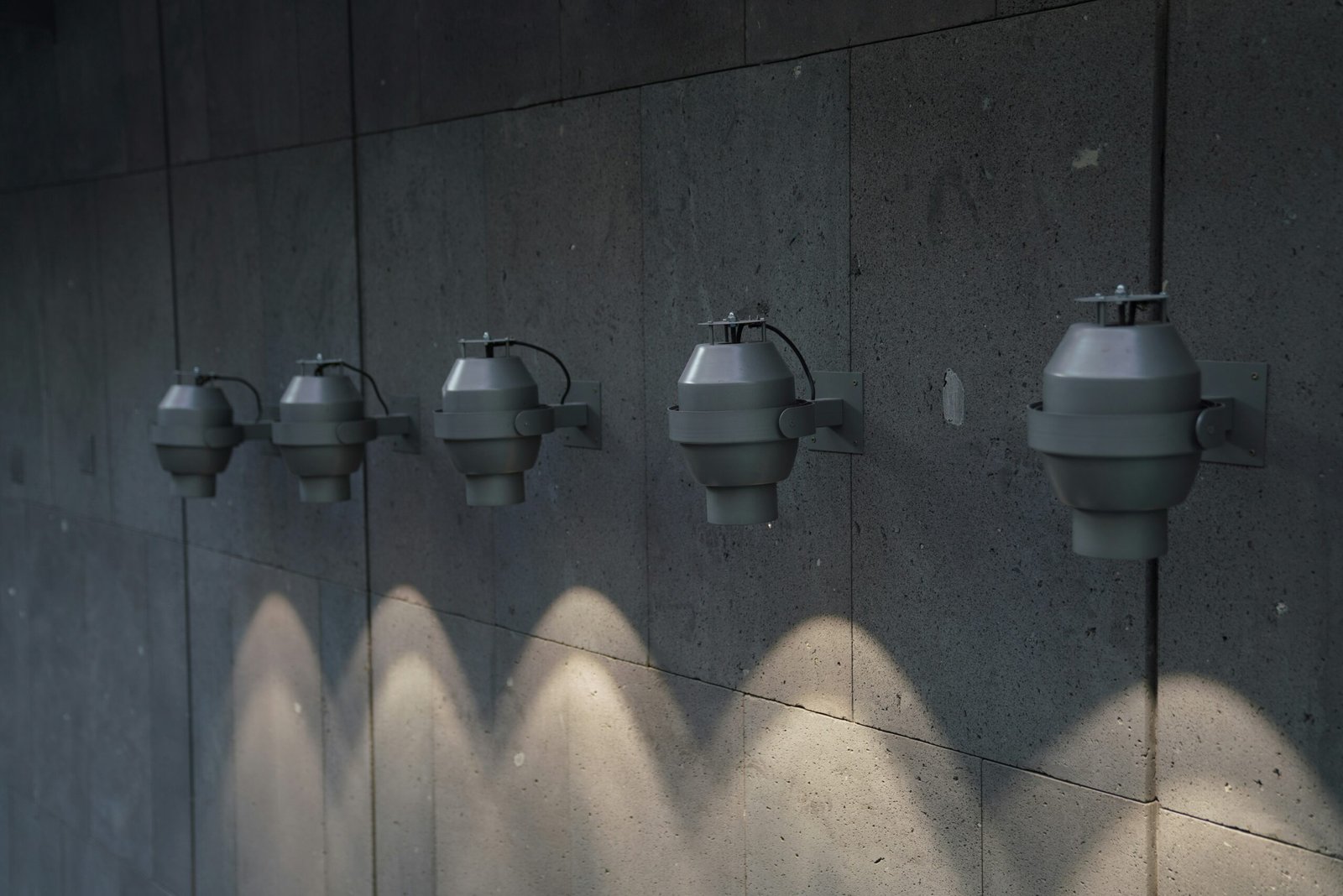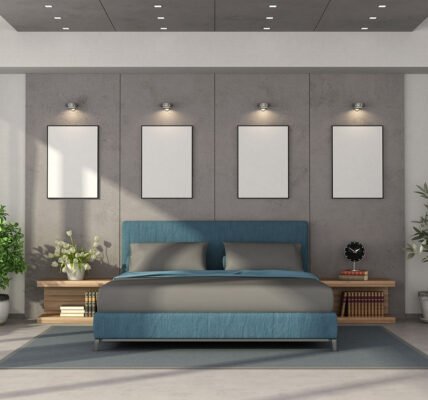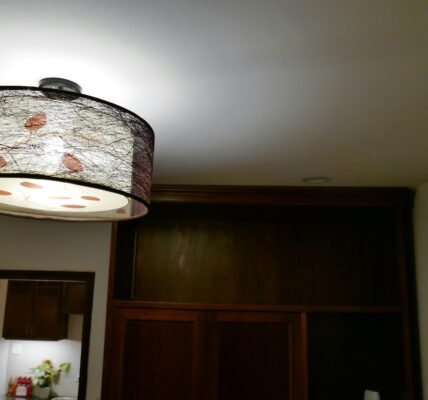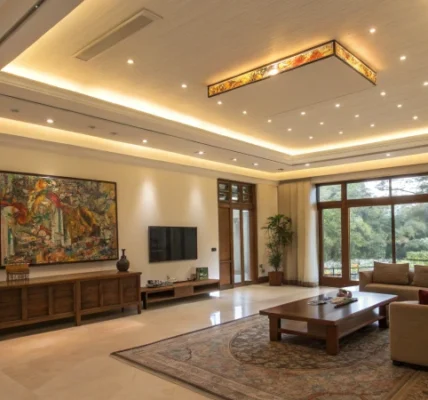Downlights, also known as recessed lights, are a type of lighting fixture that is installed into a hollow opening in a ceiling. These fixtures are designed to provide a sleek, minimalistic look while delivering focused light that enhances the ambiance of a space. The light source is hidden, rendering a more streamlined aesthetic that is particularly desirable in modern interior designs. Their unobtrusive nature makes them suitable for various applications, from highlighting architectural features to providing general illumination.
The purpose of downlights extends beyond just aesthetics; they serve critical roles in both residential and commercial environments. In residential settings, downlights are commonly utilized in kitchens, living rooms, and hallways, where they can accentuate elements such as artwork, build a cozy atmosphere, or improve task lighting. In commercial spaces, downlights are frequently seen in offices, retail stores, and restaurants, where they create a professional and inviting environment for clients and customers. Their versatility makes them a go-to choice for various lighting purposes.
Understanding proper spacing for downlights is essential for achieving optimal lighting results. Factors such as the type of activity being performed in the space and the desired light effect will influence how far apart these fixtures should be placed. With a solid grasp of what downlights are and their applications, readers can better appreciate the significance of spacing considerations, which will be explored further in this guide.
Importance of Proper Spacing
Proper spacing of downlights plays a pivotal role in achieving effective illumination while contributing to the overall aesthetics of a space. When strategically placed, downlights can optimally distribute light across a room, highlighting architectural features, artwork, or functional areas such as workspaces and dining zones. On the contrary, inadequate spacing may result in uneven light distribution, leading to excessively bright spots and dim areas. This inconsistency can cause discomfort and diminish the visual appeal of an interior setting.
Moreover, the arrangement of downlights significantly impacts eye comfort. Spaces that are too brightly lit or poorly illuminated can lead to eye strain and fatigue. When downlights are spaced appropriately, they create a balanced interplay of light and shadow, essential for ensuring that occupants can navigate the environment comfortably without experiencing glare or harsh contrasts. This is particularly important in areas designated for reading, working, or relaxation, where proper visuals are vital.
Additionally, the ambiance of a room is greatly influenced by the lighting design, which encompasses the spacing of downlights. Thoughtfully placed fixtures can foster a warm, inviting atmosphere, ideal for social interactions, while also allowing for functional illumination. The spacing should consider the type of activities intended for the space, the room’s dimensions, and the color of the walls and furnishings, which can alter the perception of light levels. By taking these factors into account, one can achieve a harmonious blend of aesthetic qualities and practical lighting needs, ultimately enhancing the overall experience within a space.
Factors Influencing Spacing Decisions
When determining the optimal spacing for downlights, several key factors come into play. Understanding these elements is crucial for achieving the desired ambiance and functionality in a space. One of the primary considerations is the ceiling height. Standard ceilings typically range from 8 to 10 feet, and the height significantly influences how far apart downlights should be placed. In general, a good rule of thumb is to space the downlights approximately one foot apart for every foot of ceiling height. This ensures even illumination without creating harsh shadows or overly bright spots.
Another important factor is the type of light source being used. LED downlights, for instance, have a different light output and beam spread compared to incandescent options. LEDs are known for their efficiency and direct lighting but can be harsher when over-spaced. Therefore, when using LEDs, a tighter spacing—usually within 4 to 6 feet—might be more appropriate. Conversely, incandescent bulbs tend to provide a warmer light and may allow for slightly greater spacing without compromising on brightness.
The function of the room also plays a pivotal role in spacing decisions. For example, in spaces designed for task lighting, such as kitchens and workspaces, downlights may need to be placed closer together to produce adequate illumination. Conversely, in ambient settings, such as living rooms or bedrooms, wider spacing may create the desired comfortable atmosphere. Lastly, the desired brightness level should be considered. Higher brightness levels may necessitate closer spacing to avoid dark areas, while lower light requirements may afford larger gaps. By carefully weighing these factors, homeowners and designers can make informed decisions regarding optimal downlight placement.
General Guidelines for Spacing Downlights
When considering the installation of downlights in a space, proper spacing is of paramount importance to ensure optimal lighting. A commonly accepted guideline for spacing downlights is derived from the height of the ceiling. The general rule is to space downlights approximately one foot apart for every foot of ceiling height. For instance, in a room with an eight-foot ceiling, the downlights should be spaced roughly eight feet apart. This principle helps maintain a balanced light distribution across the area while minimizing shadows and dark spots.
Moreover, variations in the type of room and its intended use can influence these spacing recommendations. For example, in areas where tasks require focused light, such as kitchens or workspaces, it may be beneficial to bring downlights closer together. Conversely, in larger living areas that serve more decorative purposes, a wider spacing can create an ambient atmosphere without overwhelming brightness. Thus, the spatial arrangement should reflect both functional and aesthetic considerations.
When dealing with different ceiling heights, adjustments may be necessary. For ceilings that exceed nine feet, it can be effective to space the downlights further apart, allowing for five to six feet of distance. In contrast, lower ceilings may benefit from closer placements, generally reducing the gap to about six to seven feet, fostering a cozier environment.
Finally, the size and layout of the room also play a crucial role in spacing decisions. For broader areas, designing a grid of downlights can help achieve uniform light coverage. By following these general guidelines, individuals can effectively plan their downlighting for enhanced functionality and a pleasing ambiance within their spaces.
Room-Specific Spacing Recommendations

When considering the appropriate spacing for downlights, it is essential to take into account the unique characteristics and requirements of each room. Different spaces serve distinct purposes, which influences lighting needs. Below are tailored recommendations for various types of rooms.
In the kitchen, a well-lit environment is crucial for both functionality and safety. A common guideline is to space downlights approximately 3 to 4 feet apart, ensuring all work areas, such as countertops and cooking stations, receive adequate illumination. Additionally, focused lighting over key areas can be achieved by using a combination of downlights and task lighting.
The living room serves as a multifunctional space for relaxation and socializing. Here, downlights should typically be spaced about 6 to 8 feet apart to create a warm, inviting atmosphere. Layering light is effective in living rooms, where ambient lighting combined with accent lights and task lighting enhances the overall experience.
For bathrooms, precise lighting is essential for tasks such as grooming and applying makeup. It is advisable to space downlights 3 to 4 feet apart, ensuring even coverage throughout the room. Special attention should be given to areas around mirrors, where additional focused lighting may be beneficial.
In hallways, adequate visibility is paramount for safety. Downlights should be spaced 4 to 6 feet apart, creating a consistent flow of light while avoiding overly bright spots. Utilizing dimmers can also enhance the hallway experience, allowing for adjustable lighting levels.
Each room has distinct lighting needs that should be considered when determining downlight spacing. By following these tailored recommendations, it is possible to achieve both effective and efficient lighting designs that cater to the specific requirements of each space.
Common Mistakes to Avoid
When it comes to the installation of downlights, spacing is a critical factor that influences both the quality of illumination and the overall aesthetic appearance of the space. One of the most common mistakes that many make is placing downlights too far apart. This error can lead to uneven lighting, resulting in shadows and dark areas that detract from the visual appeal of a room. Insufficient light coverage can also cause discomfort, making it challenging to perform tasks that require adequate visibility. Ideally, downlights should maintain a spacing of about six to eight feet apart, depending on the wattage and type of bulb used. This spacing ensures a more even distribution of light across the area while reducing stark contrasts in brightness.
Conversely, another prevalent mistake is placing downlights too close to each other. This can lead to an overly bright environment where light fixtures create hot spots. Overlapping light can result in glare, which is not only uninviting but can also be harmful to the eyes. A good rule of thumb to follow is to maintain a proper distance proportional to the height of the ceiling. For instance, if the ceiling height is eight feet, fixtures should be maintained at least three feet apart. While it may be tempting to cluster lights for a dramatic effect, this approach can compromise the functionality of the lighting scheme.
Additionally, failing to consider the purpose of the space can lead to significant issues. Different areas require varying levels of illumination; for example, a kitchen demands brighter, more direct light than a cozy living room. It is essential to assess the activities that will be performed in each room before finalizing downlight placement. By understanding these common spacing errors and applying thoughtful considerations to the layout, one can enhance both the performance and beauty of their lighting design.
Using Technology for Lighting Design
Advancements in technology have revolutionized the approach to lighting design, significantly improving the planning and execution of effective downlight spacing. Today, various lighting design software and mobile applications are available that cater to both professionals and DIY enthusiasts, enabling them to create optimized lighting layouts with precision.
One of the primary advantages of using these technological tools is the ability to visualize how different downlight configurations will affect a space before installation. Software programs such as Dialux and Relux offer robust solutions for creating detailed lighting plans, simulating light distribution, and assessing the impact of various downlight spacing configurations. They allow the user to input specific room dimensions, ceiling heights, and desired lighting levels, generating accurate models that can guide the placement of downlights.
In addition to advanced software, there are numerous mobile applications available that simplify the lighting design process for users with varying levels of expertise. Applications like Luminance and LightCalc provide user-friendly interfaces and features for calculating optimal downlight placement based on parameters such as desired lumens, room size, and fixture type. These tools make it easier for individuals without formal training in lighting design to achieve professional-grade results in their projects.
Furthermore, many of these technologies incorporate features for assessing energy efficiency, ensuring that users not only achieve the desired ambiance but also contribute to sustainable lighting practices. By providing suggestions on the best types of downlights and their optimal spacing, these resources help users maximize their lighting layouts while minimizing energy consumption.
In conclusion, the integration of technology in lighting design simplifies the process of planning downlight layouts. Whether for new constructions, renovations, or DIY projects, embracing these tools allows for well-informed decisions regarding downlight spacing, enhancing both functionality and aesthetics in interior spaces.
Case Studies: Real-Life Applications
In examining successful downlight installations, several case studies provide valuable insights. One notable example is the renovation of a contemporary office space in a metropolitan area. The designers opted for a spacing of approximately 6 to 8 feet between downlights to create an evenly lit environment that highlighted the modern aesthetics of the office. The use of LED downlights not only enhanced visibility but also resulted in significant energy savings. This case illustrates how strategic spacing can enhance both functionality and design.
Another case study, a residential living room remodel, focused on achieving a warm ambiance while maintaining sufficient light levels for various activities. The homeowners chose to space the downlights 4 to 5 feet apart, utilizing warmer color temperatures that contributed to a cozy atmosphere. This design effectively avoided harsh shadows and allowed for flexible lighting control through dimmer switches. Such applications emphasize the importance of considering the purpose of the space in the downlight installation process.
In a third example, an art gallery used a more specialized approach by spacing downlights around 5 feet apart to effectively showcase the artwork on the walls. The careful positioning allowed for optimal illumination without overpowering the artworks. Additionally, spotlights were incorporated to highlight specific pieces, demonstrating how combining different downlighting strategies can cater to diverse needs in a gallery setting. This case highlights the adaptability of downlight spacing based on the intended focal points within a room.
These real-life applications illustrate that while there are general guidelines for downlight spacing, successful installations often require customization to meet specific lighting objectives. By drawing on these examples, individuals and designers can make informed decisions about their own downlight arrangements.
Conclusion and Final Tips
In this comprehensive guide, we explored the critical factors influencing the spacing of downlights in various lighting scenarios. Proper downlight spacing not only enhances the aesthetic appeal of a space but also ensures adequate illumination for practical tasks. As highlighted, a fundamental rule of thumb is to space downlights approximately 4 to 6 feet apart, although this may vary based on the ceiling height, type of fixture used, and the intended function of the space.
Additionally, the brightness and beam angle of the downlights should be carefully considered. For rooms with higher ceilings, you may need to adjust the spacing to ensure an even light distribution, preventing dark spots or overly bright areas. It’s also important to account for the size and layout of the room; larger spaces may require more strategic placement of downlights to achieve effective lighting coverage. Always take into consideration the purpose of each area—task lighting needs will differ from ambient lighting in living areas.
Furthermore, incorporating dimmer switches can provide versatility, allowing for adjustments based on the mood or function of the room. When designing your lighting layout, aim for a blend of both functional and aesthetic approaches. This balance not only improves the comfort of the occupants but also enhances the overall environment.
In conclusion, thoughtful downlight placement is essential for creating a harmonious and well-lit space. By applying the principles discussed, such as calculating appropriate spacing and considering room dynamics, you will be well on your way to achieving an effective lighting design that meets both practical and aesthetic needs. Remember to remain adaptable and open to adjustments, utilizing trial and error to find the spacing that works best for your specific circumstances.




